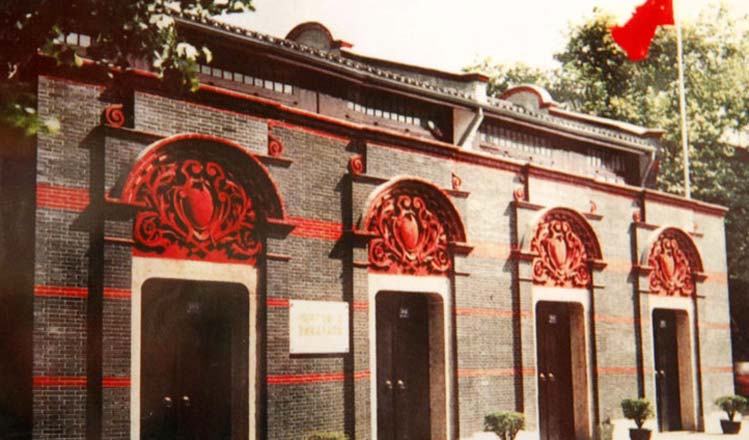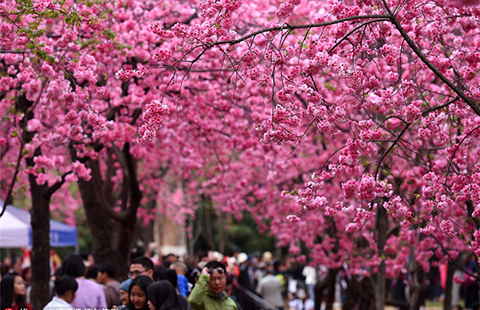Tales from Normandie Apartment
Updated: 2016-07-02 04:54
By Zhou Wenting in Shanghai(China Daily USA)
|
||||||||
Driven by their passion for preserving heritage, Chen Danyan and her team of writers and professors are due to showcase a compelling narrative of one of Shanghai's most iconic residential properties
|
 |
|
The Normandie Apartment was and still is a favorite with foreigners because of its rustic beauty and unique architecture. |
This documentary project, which took two years to complete, was the brainchild of Shanghai-based writer Chen Danyan, who had grown up in the area where the building is located. She had enlisted the help of a group of writers and professors who are similarly passionate about the city's historical structures.
"Apart from preserving the physical qualities of this property, we must also preserve the spiritual part of it. It is only with the stories of the residents in such old buildings can we get an accurate account of the history of the place," said Chen during a media briefing about the project in Shanghai on May 18.
"There are 64 streets in Shanghai that have been banned from being widened and more than half of them are within the former French Concession, a place which bears so many stories. Different communities in Shanghai have unique personalities and you can even recognize which community a person is from just by looking at his or her facial expressions. The community within the former French Concession in particular has a very strong cultural inheritance," Chen added.
The Normandie Apartment, which became known as Wukang Building after the 1950s, is widely regarded as an architectural masterpiece by Hungarian architect Laszlo Hudec, the same person behind other iconic Shanghai buildings such as the Park Hotel and the Grand Theater.
The building was in 1953 taken over by the Shanghai Municipal Government and renamed Wukang Building. In 1994, the property, which was then home to about 140 families, was listed as a city-level historical building.
Sha Yongjie, a member of the project team and a professor at the College of Architecture and Urban Planning of Tongji University in Shanghai, praised the design philosophy of Wukang Building.
"The gate of the building looks inconspicuous, which is a way to show modesty to the surroundings. Also, the spacious lobby can be seen as a sign of respect to the residents," said Sha.
The project includes invaluable input from a dozen residents, including senior managerial staff at foreign enterprises, university professors, doctors and nurses, as well as foreign residents who have lived in the eight-story apartment building. Chen said that the enthusiasm of her interviewees surprised her.
"We had to set up large video cameras and lighting in their rooms and the interview would take the whole afternoon but instead of feeling inconvenienced, they were happy to be making a contribution to this project," said Chen.
- Russian Eastern Spaceport shows mutual trust
- UK parties head for leadership battles amid Brexit fallout
- Special Syria envoy plans for July talks, August political transition
- Double suicide attacks kill at least 28 in Cameroon
- Turkey in mourning for 42 killed in deadly assault on Istanbul airport
- Brazil could dismiss Rousseff the day before Olympics ends

 Tenth birthday of the world's highest altitude train line
Tenth birthday of the world's highest altitude train line
 Crucial moments in the history of the CPC
Crucial moments in the history of the CPC
 Chibi Maruko-chan 25th anniversary exhibition
Chibi Maruko-chan 25th anniversary exhibition
 Turkey in mourning for 42 killed in assault on airport
Turkey in mourning for 42 killed in assault on airport
 China's future film stars take graduation photos
China's future film stars take graduation photos
 Russian Eastern Spaceport shows mutual trust
Russian Eastern Spaceport shows mutual trust
 Chinese Olympic team's uniforms unveiled in Beijing
Chinese Olympic team's uniforms unveiled in Beijing
 Paintings on paddy fields in Shenyang, NE China
Paintings on paddy fields in Shenyang, NE China
Most Viewed
Editor's Picks

|

|

|

|

|

|
Today's Top News
Abe's blame game reveals his policies failing to get results
Ending wildlife trafficking must be policy priority in Asia
Effects of supply-side reform take time to be seen
Chinese State Councilor Yang Jiechi to meet Kerry
Chinese stocks surge on back of MSCI rumors
Liang avoids jail in shooting death
China's finance minister addresses ratings downgrade
Duke alumni visit Chinese Embassy
US Weekly

|

|







